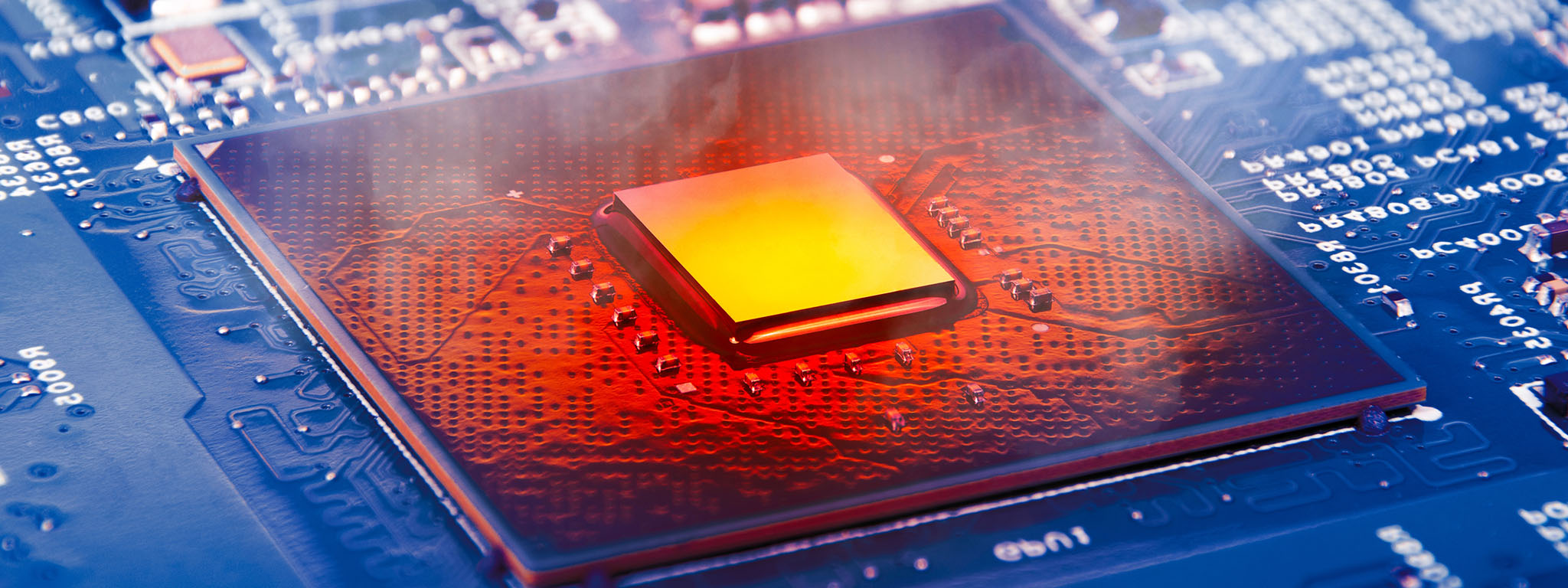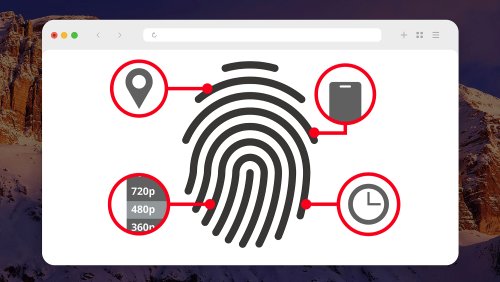What is a GPU? And Why Boosting Can Increase Computer Performance
Hijacking a graphics card to boost the GPU performance isn’t a new phenomenon. It is quite common in the gaming scene, where enthusiasts seek to enhance their gaming experience with ultra-smooth, high-performance graphics. In this blog post, we will go deeper into GPU performance and share both simple and advanced ways to improve your GPU’s performance.
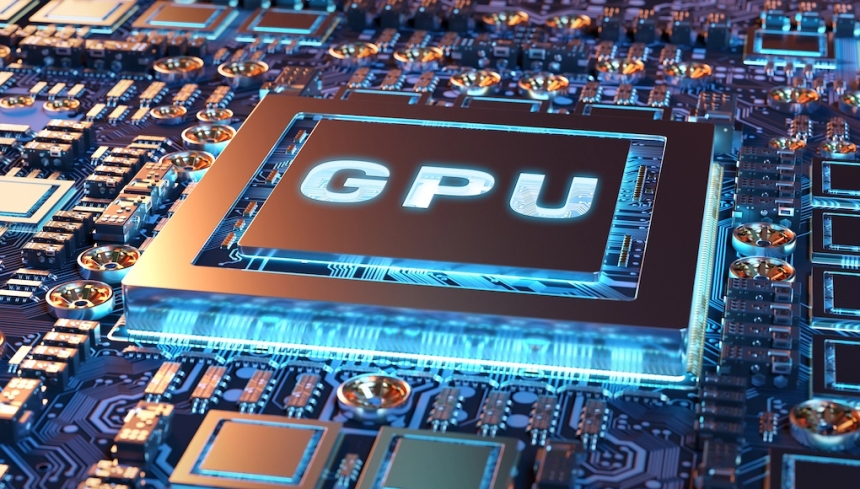
What is a GPU?
A graphics processing unit (GPU) is an electronic circuit that can perform mathematical calculations at high speed. Computing tasks like graphics rendering, machine learning (ML), and video editing require the application of similar mathematical operations on a large dataset. A GPU’s design allows it to perform the same operation on multiple data values in parallel. This increases its processing efficiency for many compute-intensive tasks.

Why are GPUs important?
A GPU is excellent at performing general-purpose parallel processing, but historically, this wasn’t always the case. As the name suggests, GPUs were initially designed for one specific task: controlling image display.
Origin of the GPU
Before the GPU, we had dot matrix screens, which were released in the 1940s and 1950s. Vector and raster displays were released after, and then later, the first video game consoles and PCs were released. At the time, a non-programmable device called a graphics controller coordinated the display to the screen. Graphics controllers traditionally relied on the CPU for processing, although some included on-chip processors.
Around the same time, there was a 3D imaging project concerned with generating a single pixel on a screen with a single processor. The goal was to produce an image that combines many pixels in a short amount of time. This project was the origin of the GPU as we know it.
It wasn’t until the late 1990s that the first GPUs came out. These were aimed at the gaming and computer-aided design (CAD) markets. The GPU integrated a previously software-based rendering engine and transformation and lighting engine with the graphics controller—all on a programmable chip.
Evolution of GPU technology
Nvidia was the first to market the single-chip GeForce 256 GPUs in 1999. The 2000s and 2010s marked a growth era where GPUs gained functions like ray tracing, mesh shading, and hardware tessellation. These led to increasingly advanced image generation and graphics performance.
It wasn’t until 2007 that Nvidia released CUDA, a software layer making parallel processing available on the GPU. Around this time, it became clear that GPUs were very effective at performing highly specific tasks. Specifically, they excelled at tasks that require a large amount of processing power to achieve a particular outcome.
When Nvidia released CUDA, it opened up GPU programming to a wider audience. Developers could then program GPU technology for all sorts of different compute-intensive practical applications. GPU computing started to become far more mainstream.
GPUs are an in-demand chip for blockchain and other emerging applications. They're increasingly being put towards artificial intelligence and machine learning (AI/ML).
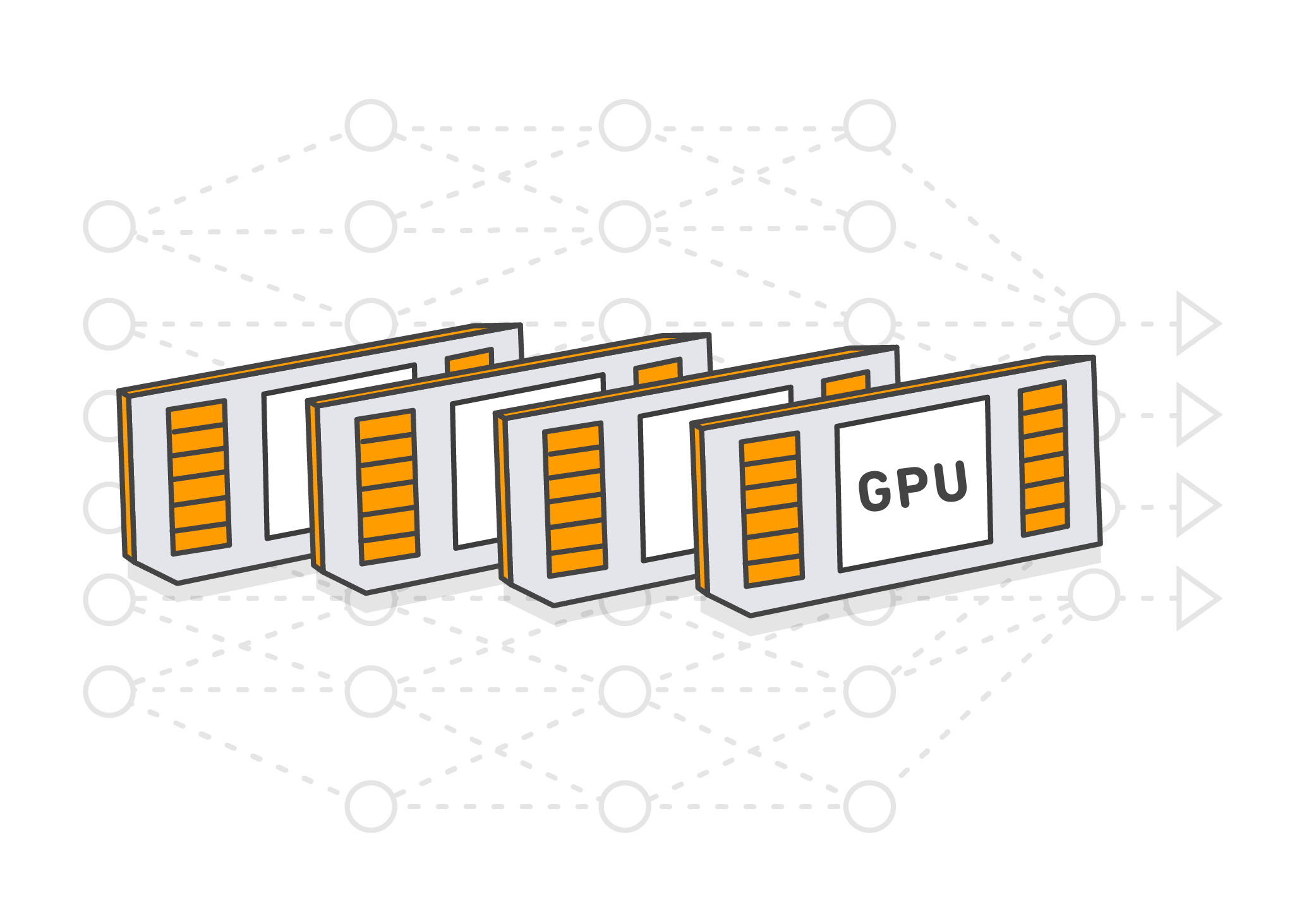
What are the practical applications for a GPU?
GPUs can be used across a wide range of compute-intensive applications, including large-scale finance, defense applications, and research activities. Here are some of the most prevalent uses of GPUs today.
Gaming
The GPU’s first applications that extended beyond large business and government visualization applications were in personal gaming. They were used in the gaming consoles of the 1980s and still are in PCs and current gaming consoles. GPUs are essential for complex graphical rendering.
Professional visualization
GPUs are used in professional applications such as CAD drawing, video editing, product walkthroughs and interactivity, medical imagery, and seismic imaging. They are also applied to other complex image and video editing and visualization applications. Browser-based applications can even exploit the GPU through libraries such as WebGL.
Machine learning
Training a machine learning (ML) model requires a large amount of compute power. They can now run on GPUs for accelerated results. While it might take a long time to train a model on self-purchased hardware, you can achieve results quickly by using a cloud GPU.
Blockchain
Cryptocurrencies are built on blockchains. A particular type of blockchain, proof of work, typically relies heavily on GPUs for operation. Application-specific integrated circuits (ASICs), a similar but different chip, are now a common replacement for GPU processing for blockchain.
Proof-of-stake blockchain algorithmic proofs remove the need for massive amounts of computing power, but proof of work is still pervasive.
Simulation
Advanced simulation applications, such as those used in molecular dynamics, weather forecasting, and astrophysics, can all be accomplished through GPUs. GPUs are also behind a lot of applications in automotive and large vehicle design, including fluid dynamics.
Why boost GPU performance?
Why would anyone want to tamper with a GPU to enhance the performance of their current graphics card? Why not just buy a new one? The most straightforward answer to this question is: because it is possible. But let’s take a deeper look into this and try to understand what the reasons are, and what initiates this action. There are several reasons why someone would want to improve the performance of their GPU.
New graphics cards are expensive
As we all know, graphics cards can be quite expensive. Consequently, some people prefer to buy a previous-generation graphics card and boost it up, rather than investing in the latest model. However, the performance gained by boosting the GPU is not huge, and it will most likely not match the performance of a newer generation card. But in some cases, it might still make a difference.
Like any technical product, GPUs evolve quite rapidly, and older-generation GPUs are quickly replaced by newer ones. Simultaneously, applications and software are also evolving – pretty much at the same rate. This makes an older-generation GPU perform in a non-optimal way on newer versions of software and applications. Therefore, many consumers choose to boost its performance, extending the usability of the card. This approach allows users to run applications optimally without the immediate need to purchase a new GPU.
Getting the most out of your gaming experience
In the gaming industry, real-time graphics are essential, and the limits imposed by technology are always pushed further. We can say that gaming is one of the leading forces behind real-time graphics and GPU advances. Hence, the demand for improved performance is significant. And of course, this is where the various methods of performance boost come into play.
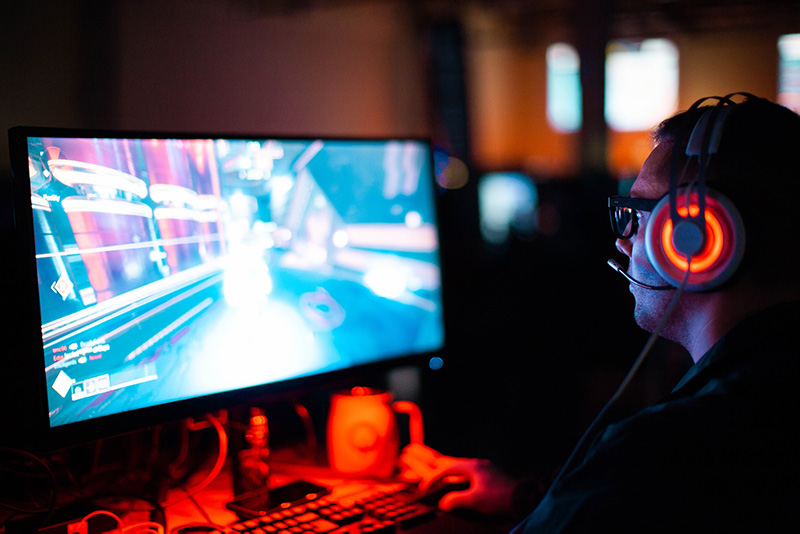
In gaming, a good user experience is essential, which equals high frame rates and astonishing graphics. From year to year, the requirements are getting higher, as the quality increases. One thing to consider, though, is that just boosting the GPU performance may not always be enough. Some graphics technologies require newer architectures – especially when talking about ray tracing, path tracing, or just specific shaders. Unless the graphics card is compatible with these technologies, no performance boost can help.
What's the difference between a GPU and a graphics card?
The names graphics processing unit and graphics card are often used interchangeably, but they are not the same thing.
Graphics cards are an add-in board (AIB) that slots into a place on a computer’s motherboard. Graphics cards are not built into the computer itself; they are interchangeable cards. A graphics card comes complete with a GPU.
The GPU is the main component of graphics cards. It exists alongside other components like video RAM (VRAM) for video memory, ports (such as HDMI or DisplayPort), and a cooling component. However, a GPU can also be built directly into the motherboard or integrated as an all-in-one chip together with other components.
Importance of monitoring and benchmarking the GPU performance
The usage of graphics benchmarks when trying to boost your GPU performance is a must. Before initiating any measures to improve the GPU performance, it is important that you know your baseline. Meaning, that you know how well (or badly) your GPU is performing right at this moment. After making your edits, rerun the benchmark to compare and determine whether the measures taken have had an impact on the performance or not.
Also, by continuously running a stress test (graphics benchmark), you can see whether the measures have the desired effect in the long run and see what the optimal parameters are to get the desired result. Even in the case of upscaling or frame generation, a stress test can show what is the percentual gain in performance. Running a stress test can give important information on the frame rates, quality, and stability when certain actions are performed on the GPU.
GPUScore offers a broad variety of graphics benchmarks for different devices and operating systems that are perfect for checking the performance gain after initiating any GPU boosting measures.
Ways to boost the GPU performance
Next, we will share some simple and more advanced methods on how to boost the GPU performance. Although technically, some of these methods do not have a direct impact on the GPU performance, they will help you enhance your graphics experience.
1. Keep the dust off
Starting from the simplest measures to the more complex, one way to ensure that the GPU is not underperforming is to keep it clean. In other words, keep the dust off. Yes, you read right, you have probably seen others suggest that too. Thus, of course, we’re not necessarily talking about scattered dust particles that gather all the time; we’re talking about thick layers that act as thermo-isolation and block the ventilation airways. This will ensure that the GPU is not pushed uselessly under hostile conditions, and that may have a positive impact on its life expectancy.
If you haven’t dusted off your computer for a few years, this is your sign to check the dust situation.
2. Ensure your laptop is plugged in
If you are using a laptop, another simple measure, to ensure that the GPU performs “at least” as expected is to keep the laptop plugged in when performing heavy tasks. The GPU is a very big power consumer, so when unplugged, it underperforms to ensure longer machine operability.
3. Update your drivers
Continuing with simple measures, another way to ensure optimal operability of the graphics card is to update the drivers to the latest version. The best practice for staying current with updates is to periodically check directly on the vendor’s website, rather than relying on utility tools. Additionally, many drivers offer advanced settings that allow users to further customize their experience, instead of relying on predefined settings.
4. Using AI-based algorithms
When talking about GPU performance and visual experiences, it is worthwhile to explore what solutions GPU vendors such as AMD, NVIDIA, or Intel have to offer in terms of performance improvement. Because some of the new technologies that have been released can be very useful and an efficient way to improve the experience.

AI-based upscaling algorithms (like DLSS, FSR, or XeSS), or frame generation, are some technologies that should be considered. When referring particularly to upscaling, it basically enables the card to render at a higher resolution, at a lower resource cost, using an AI algorithm. Frame generation, as the name suggests, adds extra frames in between, offering a smoother experience. Enabling these on the supporting graphics card would allow the GPU to handle extra tasks. Although these measures don’t necessarily boost the GPU performance, they contribute to it and certainly improve the experience at a lower resource cost.
5. Enabling synchronized monitor refresh rate
Another measure that can be taken to boost performance is to enable monitor-specific settings, such as G-Sync or FreeSync. Unfortunately, this isn’t possible on every monitor; it is usually just available on newer monitors. This setting allows you to synchronize the monitor’s refresh rate with the GPU’s own framerate. Enabling synchronization will improve the graphics experience while gaming and save power.
6. GPU Overclocking
When moving on to more complex methods for improving the GPU performance, we cannot omit GPU overclocking. This technique reliably delivers a noticeable improvement in actual performance.
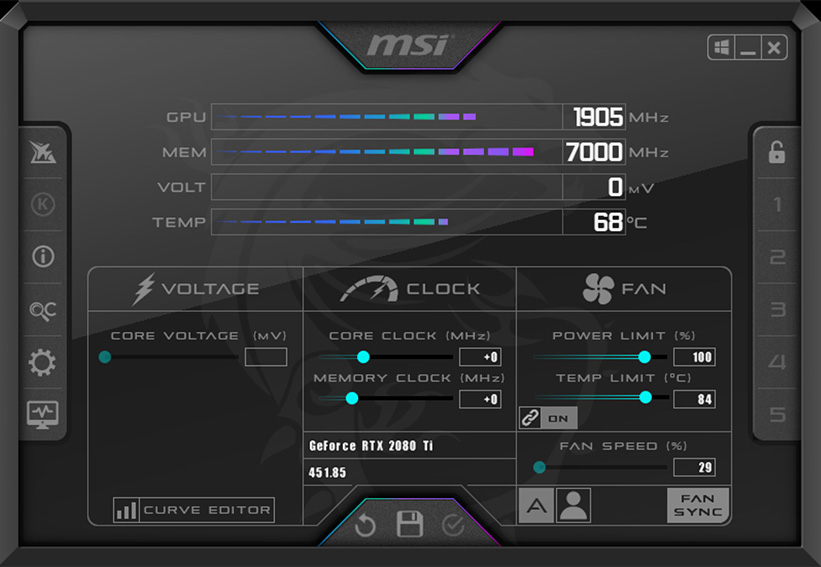
In short, overclocking means pushing the GPU's capabilities beyond its standard limitations. By default, graphics cards work under some specific settings, which are within the “safe” performance limits. For anyone who wants to get the most out of their GPU, they often must go beyond the safe limit range. However, in some particular cases, this might generate some unexpected or undesired consequences. But in most cases, it doesn’t. Luckily, before going wrecked, or when the parameters hit the critical zone, the GPU gives signs – visual artifacts, or just crashes.
Overclocking is not a 100% safe method. This means there might exist one card from the stock for which overclocking is fatal. Also, working continuously on an overclocked GPU will certainly reduce its lifespan. Normally, overclocking should be done only temporarily. Using an overclocked GPU daily, sure does work, but it does not make any sense as the GPU suffers from redundant stress.
Boosting your GPU: a cost-effective solution
Optimizing or boosting GPU performance is a common practice, especially in the gaming community, driven by the high cost of new graphics cards and the rapid evolution of technology. To enhance GPU performance, several measures can be taken, ranging from basic maintenance, such as keeping the computer “dust-free”, to advanced techniques like AI-based algorithms usage and overclocking. These methods not only improve the graphics experience but might also prolong the usability of existing GPUs, presenting a cost-effective alternative to upgrading.
Boosting a GPU can lead to significant performance gains, especially for graphics-heavy applications and gaming. However, it requires careful consideration of the cooling system, system stability, and the potential risks involved.
Share
What's Your Reaction?
 Like
0
Like
0
 Dislike
0
Dislike
0
 Love
0
Love
0
 Funny
0
Funny
0
 Angry
0
Angry
0
 Sad
0
Sad
0
 Wow
0
Wow
0

